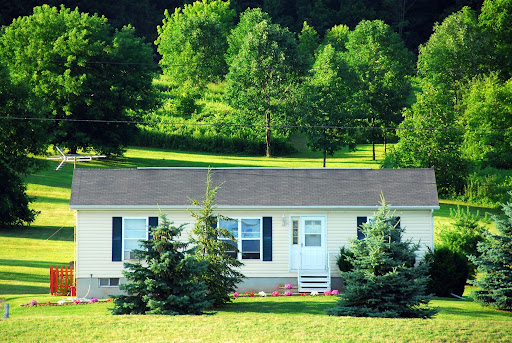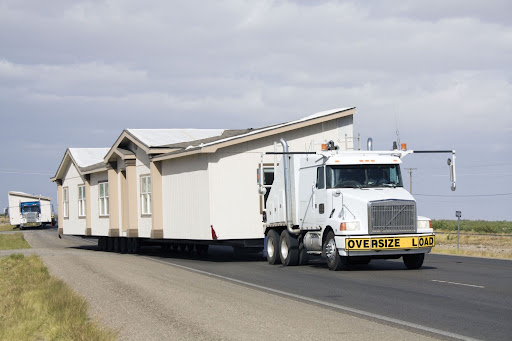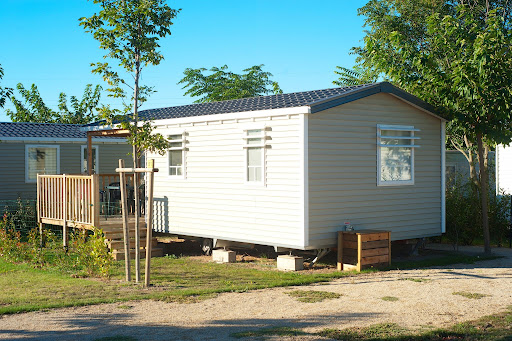
Personal identities are shaped by a life of circumstance, adversity, sensitivity, and the inability to give in to self-pity. And being an American homeowner is an identity of pride.
The typical American homeowners stay in their homes for at least 13 years. In the American northwest, most homeowners own their homes for 16 to 18 years.
However, this refers to traditional “stick-built” homeowners who live in homes permanently connected to the land.
Those estimates also refer to homeowners who live in mobile, manufactured, and modular homes, which are all terms interchangeably used to describe the same thing.
Contrary to popular belief, a mobile home is not a smaller-sized home with wheels on it. Such homes are called mobile homes because they are prefabricated in factories and then transported in sections or on wheels to be installed on land.
An updated 2021 homeowners study commissioned by the National Association of State Energy Officials shows that over 22 million Americans live in mobile homes.
Mobile homes are energy-efficient, relatively more manageable to move and transport than traditional stick-built homes, and are more affordable than conventional homes.
So, when considering that traditional and detached homeowners stay in their homes for more than a decade on average, do manufactured homes last long?
Are you looking to buy a factory-built mobile, modular, singular, or double-wide home? Contact Home Nation today.
Related: Best Ways to Increase the Value of Your Modular Home
How Long Does a Mobile Home Last?
A HUD compliant mobile home that is regularly maintained and repaired as needed will last as long as a traditional home, anywhere between 30 and 50 years.
A significant reason mobile homes are now designed and manufactured to last decades is strict manufacturing regulations.
Mobile homes must be specifically constructed to comply with strict federal manufacturing standards before any local and regional codes can be applied. After a mobile home has been approved by the U.S. Housing and Urban Development, all applicable federal standards permanently supersede local regulations.
All mobile homes are constructed with one federal standard before being adapted for any local environmental or weather standards.
However, this regulatory construction standard only applies to all mobile homes constructed after June 15, 1976. Any mobile home built before June 15, 1976, can’t be guaranteed to last anywhere between 30 to 50 years.
Here are some examples of the HUD-mandated construction standards that ensure that most mobile homes built after 1976 will last for decades.
The HUD Tag
Every mobile home built after 1976 must legally have a small, square, red-colored HUD tag affixed to it, usually at the back of the structure near the bottom.
The red HUD tag, also known as the HUD label, is the equivalent of a VIN for vehicles mixed with a quality standard guarantee. A single-wide mobile home will feature one HUD tag, and double-wide has two of them.
Some older HUD tags may be pink or silver in color before red became the standard color for the tag.
The HUD tag says that the mobile home was constructed and inspected to meet the federal regulatory standards of HUD before the sale. Every HUD tag has a 9-digit serial number.
The first three digits identify where the mobile home was constructed.
And the subsequent 6-digits is the manufacturer’s serial number.
If you buy a mobile home without a HUD tag, you can be confident that it was constructed before June 15, 1976. And you can also be sure that it doesn’t comply with modern HUD standards, is probably structurally weakened, and probably in need of numerous repairs.
And it is also sure that a mobile home prefabricated was not built to a standard that will enable it to last 30 to 50 years.
HUD Mobile Home Specifications
HUD’s regulatory system was designed to expand the lifespan of a mobile home. Mobile homes built after 1976 must be constructed to be used as a habitat.
A mobile home does not need to be permanently attached to a foundation to connect to utilities. But it should be constructed to accommodate for such contingencies relative to local codes.
However, all mobile homes must be placed on permanent foundations for habitation.
A mobile home must be transportable in one or multiple sections for the convenience of transport.

And a mobile home must be at least 40 feet in length, 8 feet wide, and offer at least 320 square feet of space to homeowners.
Mobile homes are constructed in factories across the United States to maintain the strictest, HUD-compliant regulatory standards.
Permanent Steel Chassis
All HUD compliant mobile homes must have a permanent steel chassis attached to their underside. Having a permanent steel chassis attached to every mobile home makes them easier to transport safely to mobile parks and property lots.
Fire Resistant
HUD compliant mobile homes are constructed to be fire resistant and allow inhabitants enough time to escape in case of fire.
According to a National Fire Protection Association 2013 study, mobile homes experience up to 44% fewer fires and fire-related injuries per every 100,000 people relative to traditional homes.
All fire safety codes requirements in a mobile home supersede any local codes. HUD compliant homes must be constructed of materials that limit the generation and spread of smoke. All bedrooms in a mobile home must allow quick exits when necessary.
And there must be at least two exterior doors, with some distance between them in every trailer.
Having smoke detectors with working batteries in place in a mobile home at all times is mandated as well.
This is not to imply that mobile is fireproof. The point is that they are constructed in a fire-resistant manner which allows them to last for decades with proper maintenance.
Local Building Codes
Even though mobile homes are all built to be HUD compliant as a primary regulation, secondary local building code regulations are also instrumental in ensuring that they last for decades,
For example, mobile homes constructed on the coastline must have additional reinforcements built to help them deal with hurricane wind speeds for enough moments to allow inhabitants to escape.
Mobile homes manufactured in regions that experience harsher and colder winters must have adequate insulation. And they must be constructed with reinforced roofs that can withstand heavy amounts of accumulated snow.
Factors That Affect Mobile Home Longevity
Several key factors determine how long a mobile home will last:
Construction Quality: Homes built with higher quality materials and craftsmanship tend to have a longer lifespan. The HUD Code, implemented in 1976, set national standards for construction, which greatly improved the durability of mobile homes built after this date.
Climate and Location: The environment in which the home is located plays a crucial role. Homes in areas prone to extreme weather conditions, such as hurricanes or heavy snowfall, may have a shorter lifespan unless they are properly reinforced or protected.
Maintenance: Regular maintenance is perhaps the most significant factor in determining how long a mobile home will last. This includes tasks such as checking for leaks, maintaining the roof, ensuring proper insulation, and regularly servicing the HVAC system.
How to Prolong the Lifespan of Your Mobile Home
While maintenance is crucial, there are additional steps you can take to ensure your mobile home remains in good condition for as long as possible:
Upgrade Building Materials: Consider upgrading to more durable materials, such as a metal roof or vinyl siding, which can better withstand the elements.
Install Skirting: Proper skirting can protect the underside of your mobile home from moisture, pests, and cold weather, all of which can cause damage over time.
Invest in Insulation: Upgrading the insulation in your mobile home can improve energy efficiency and protect the structure from extreme temperatures, which can lead to wear and tear.
Regular Inspections: Schedule regular professional inspections to identify potential issues before they become major problems.
Your Mobile Home Could Last for Decades

The best way to ensure that your mobile home lasts for 30 to 50 years is to always maintain maintenance vigilance. Have your mobile home inspected annually. And deal with any repair issues as they occur.
Make sure that you can see the red HUD tag on your mobile home. And always buy from a professional and trusted mobile home dealer.
If you want to buy a well-constructed mobile home for the long term, contact Home Nation today.






